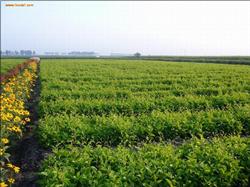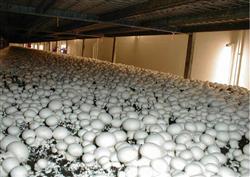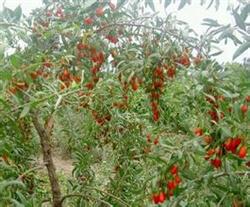Lycium barbarum likes fertilizer and avoids more humidity. Field management needs attention.

Chinese wolfberry is a deciduous shrub of Solanaceae, also known as Chinese wolfberry, dog milk root, etc., is a famous ornamental fruit plant. The florescence of Lycium barbarum is from June to September and the fruiting period is from September to October. Its leaves, roots and fruits can be used as medicine, and the old roots can be made into open-root bonsai when potted. Lycium barbarum has a wide range of adaptation, lax requirements for soil, tolerance to drought, barren, salinity and sand famine, and grows best in well-ventilated sandy loam. Cuttage propagation is often used in propagation, and the specific methods are: 1. After the seedling land is turned over, apply 1500 to 2000 kg of basic fertilizer or 100kg of chemical fertilizer per mu. two。 Collect cuttings before the spring sprouting of Chinese wolfberry branches, combined with the pruning of large seedlings of Chinese wolfberry, collect cuttings and cut into cuttings 10 to 15 centimeters long. 3. The cuttings were soaked in rooting powder for 24 hours. In the nursery bed according to the row spacing of 30 cm to trench, with 5 cm plant spacing cuttings, cuttings into the soil depth of 5 to 10 cm. Before transplanting large seedlings in the garden, the field should be trenched according to the specification of row spacing of 1 meter and plant spacing of 33 centimeters, and the planting ditch should be 30 to 40 centimeters deep. 2000 kg of base fertilizer is applied per mu, and 2000 seedlings can be planted per mu. Field management 1. Timely ploughing and weeding to prevent weeds, compete with plants for fertilizer and spread diseases and insect pests. two。 Top dressing. Chinese wolfberry likes fertilizer and has a long flowering and fruiting period. attention should be paid to fertilization in the period of budding, flowering and fruiting. Fertilization is generally applied 2 to 3 times during the growing period to promote seedlings, attack poles and increase fruit. 3. Pruning. The branching ability of Chinese wolfberry is strong, and the new branches grow vigorously. Every year, the old branches should be cut off before germination in early spring, the overgrown branches should be cut off in summer, and the old branches and disease and insect branches should be cut off in autumn. Pruning can reduce diseases and insect pests, enhance ventilation and light transmission, and reduce nutrition consumption. Newly planted Chinese wolfberry seedlings, when the trunk is 60 cm high, go to the top, leaving 3 to 5 lateral branches. In the second year, the selected 3-5 lateral branches were retracted to 30 cm to form the first crown. After that, it will be cultivated year by year to form a three-story "upstairs" tree crown and increase the amount of fruit hanging. If you make bonsai, you can cut off the sturdy branches of Chinese wolfberry before germination in the spring of the following year, and then blossom and bear fruit in the coming year. 4. Water management. Lycium barbarum bogey multi-wet and poor drainage, but too dry and affect its growth and development, timely drainage and irrigation should be carried out according to local conditions. 5. Disease control. The main diseases of Lycium barbarum are black fruit disease and root rot, which mostly occur in the rainy season. When the black fruit disease occurs, the buds, flowers and fruits turn black, and there is red mucus in the diseased part under wet conditions. You can spray Bordeaux solution (1) or 50% carbendazim 1000 times in the early stage of the disease. When the root rot disease occurs, the stem base of the diseased plant turns black and rotten, the aboveground branches and leaves turn yellow, and finally the whole plant dies. The diseased plant should be removed immediately and the soil around the diseased plant should be disinfected with lime or 70% pentachloronitrobenzene. At the initial stage of the disease, 1000 to 1500 times of carbendazim can be used to prevent and cure the disease.
- Prev

Eight points for attention in the control of diseases and insect pests of Pleurotus ostreatus
By strengthening the comprehensive management of the cultivation of Pleurotus ostreatus, creating an environment conducive to the growth of Pleurotus ostreatus but not conducive to the reproduction of diseases and insect pests is the key to the growth of organic Pleurotus ostreatus. 1. Do a good job in environmental hygiene. Seed production and operators must establish a normal clean and sanitary management system, constantly remove pollutants and disinfect them with chemicals.
- Next

Soil fertilizer management of Lycium barbarum
During the whole growth and development period from seedling cultivation to harvest, the grower must carry out a series of technical management measures in the field, which are collectively referred to as field management. According to the effective production cycle of pollution-free Lycium barbarum plants, field management can be divided into juvenile stage (1 ~ 4 years) and adult stage (more than 5 years). Field management is first of all soil.
Related
- Fuxing push coffee new agricultural production and marketing class: lack of small-scale processing plants
- Jujube rice field leisure farm deep ploughing Yilan for five years to create a space for organic food and play
- Nongyu Farm-A trial of organic papaya for brave women with advanced technology
- Four points for attention in the prevention and control of diseases and insect pests of edible fungi
- How to add nutrient solution to Edible Fungi
- Is there any good way to control edible fungus mites?
- Open Inoculation Technology of Edible Fungi
- Is there any clever way to use fertilizer for edible fungus in winter?
- What agents are used to kill the pathogens of edible fungi in the mushroom shed?
- Rapid drying of Edible Fungi

